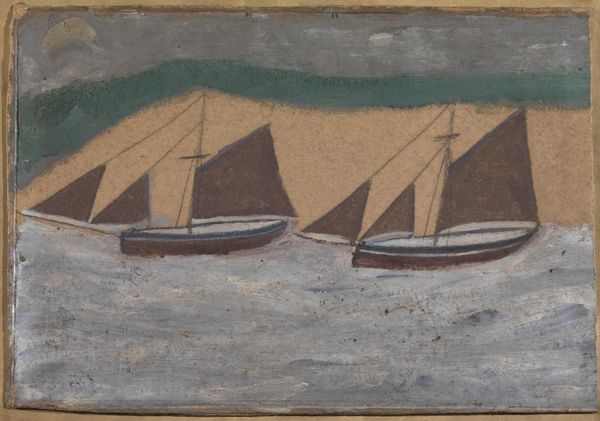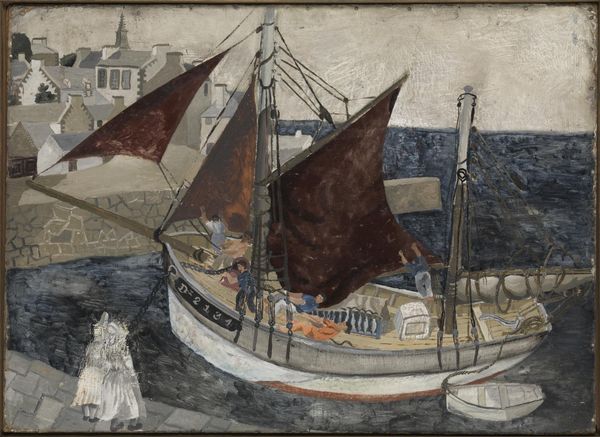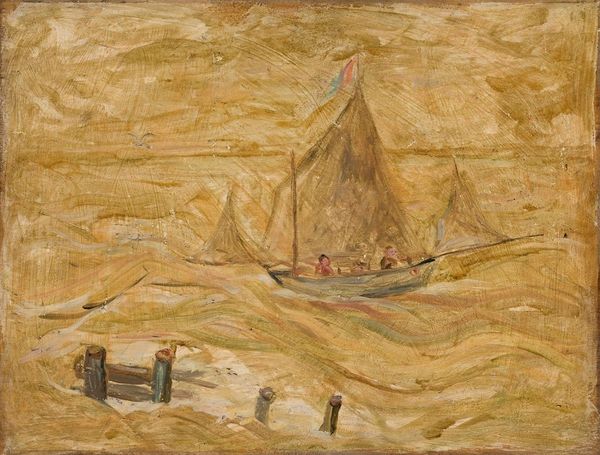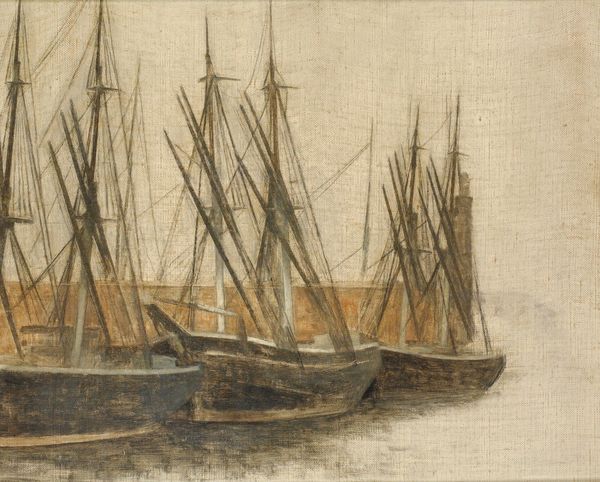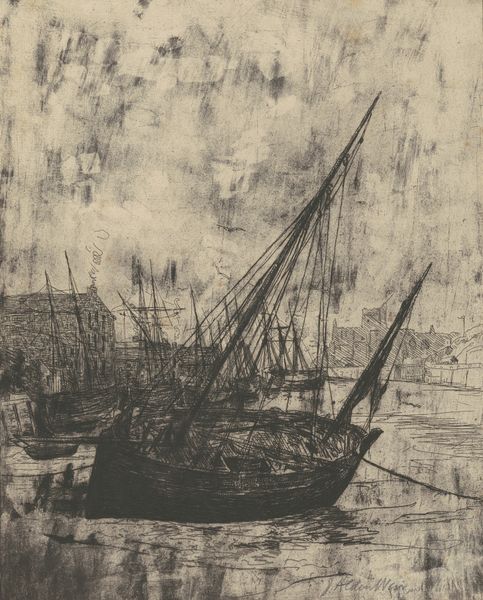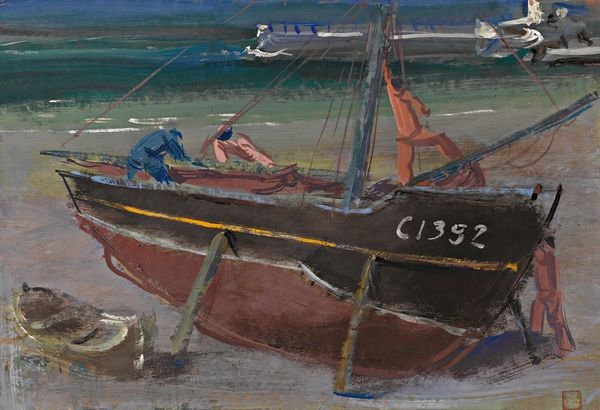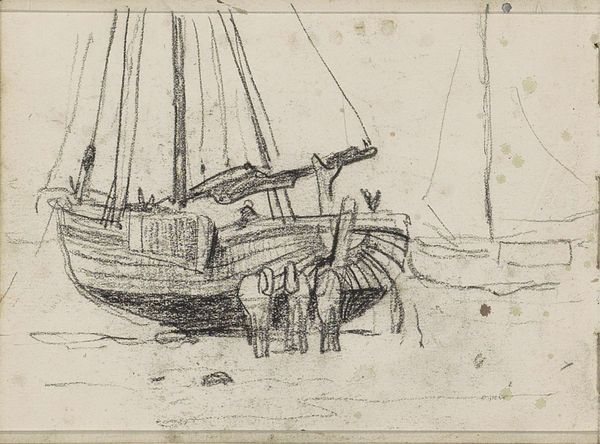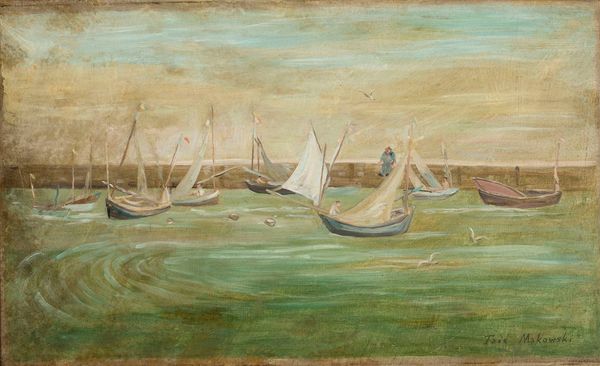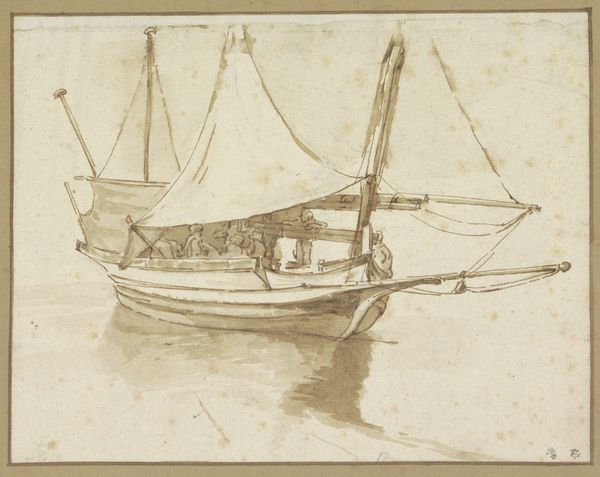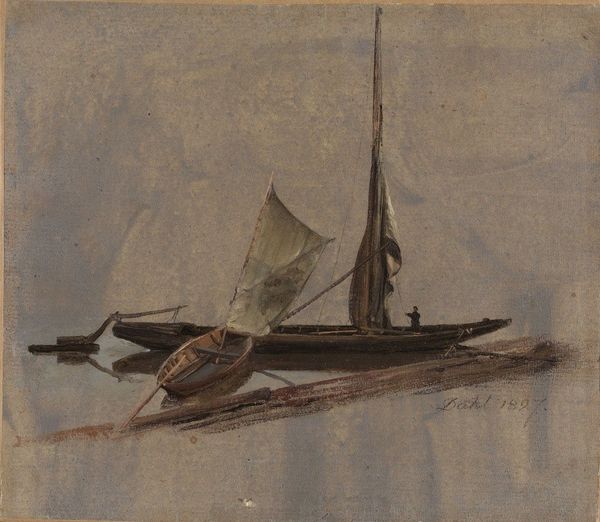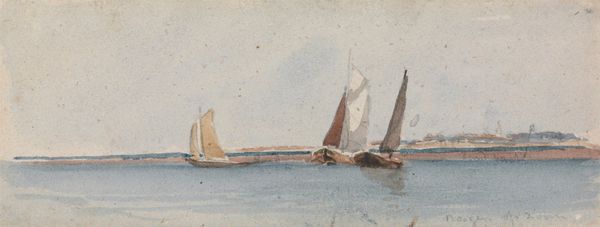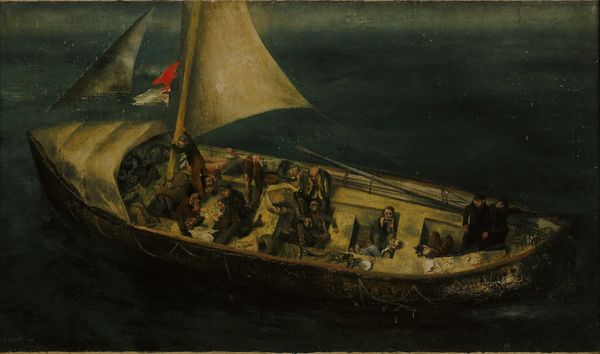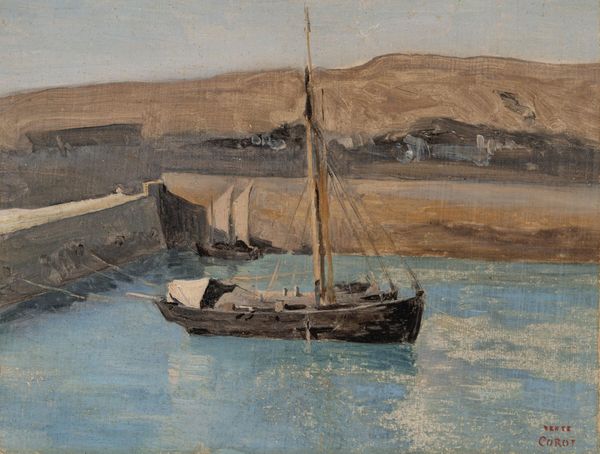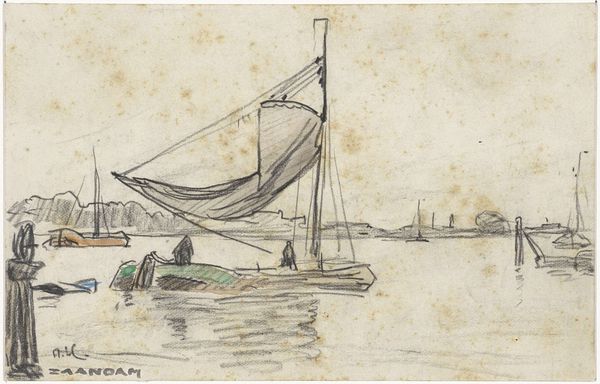
Dimensions: frame: 437 x 537 x 48 mm support: 359 x 460 mm
Copyright: CC-BY-NC-ND 4.0 DEED, Photo: Tate
Curator: Oh, the sea! It speaks to me of both freedom and melancholy. Editor: I agree. This is Alfred Wallis's P.Z. 11, housed here at the Tate. Wallis, born in 1855, spent his life close to the sea, first as a fisherman and later in maritime trades. Curator: There's a raw, untamed quality to his work, isn't there? The perspective is childlike, yet the emotion feels deeply adult, shaped by a life lived intimately with the ocean’s rhythms. Editor: Absolutely. Wallis began painting later in life, after the death of his wife. We can see how his experiences informed a unique visual language that defies academic training. He captures the plight and the struggle of the working class during his time. Curator: It feels almost like a memory surfacing, a dream of ships and shores. I can almost smell the salt air. Editor: Wallis gives us a document of life while also engaging in a powerful aesthetic act. Curator: It's more than just a picture; it's a feeling. Editor: Indeed. And it gives us insight into a worldview forged in struggle.
Comments
Join the conversation
Join millions of artists and users on Artera today and experience the ultimate creative platform.
tate 6 months ago
⋮
Alfred Wallis was a seaman, ice cream seller and rag-and-bone man before he took up painting in old age. He said he painted ‘what used to be’ and many of his works depict a remembered past.In 1928 he met professional artists Ben Nicholson and Christopher Wood, for whom Wallis’s work represented an instinctive and naïve folk art. As such, Wallis seemed to belong to the tradition of rustic characters common in literature, and represented a link to an apparently timeless English culture. Gallery label, July 2007
